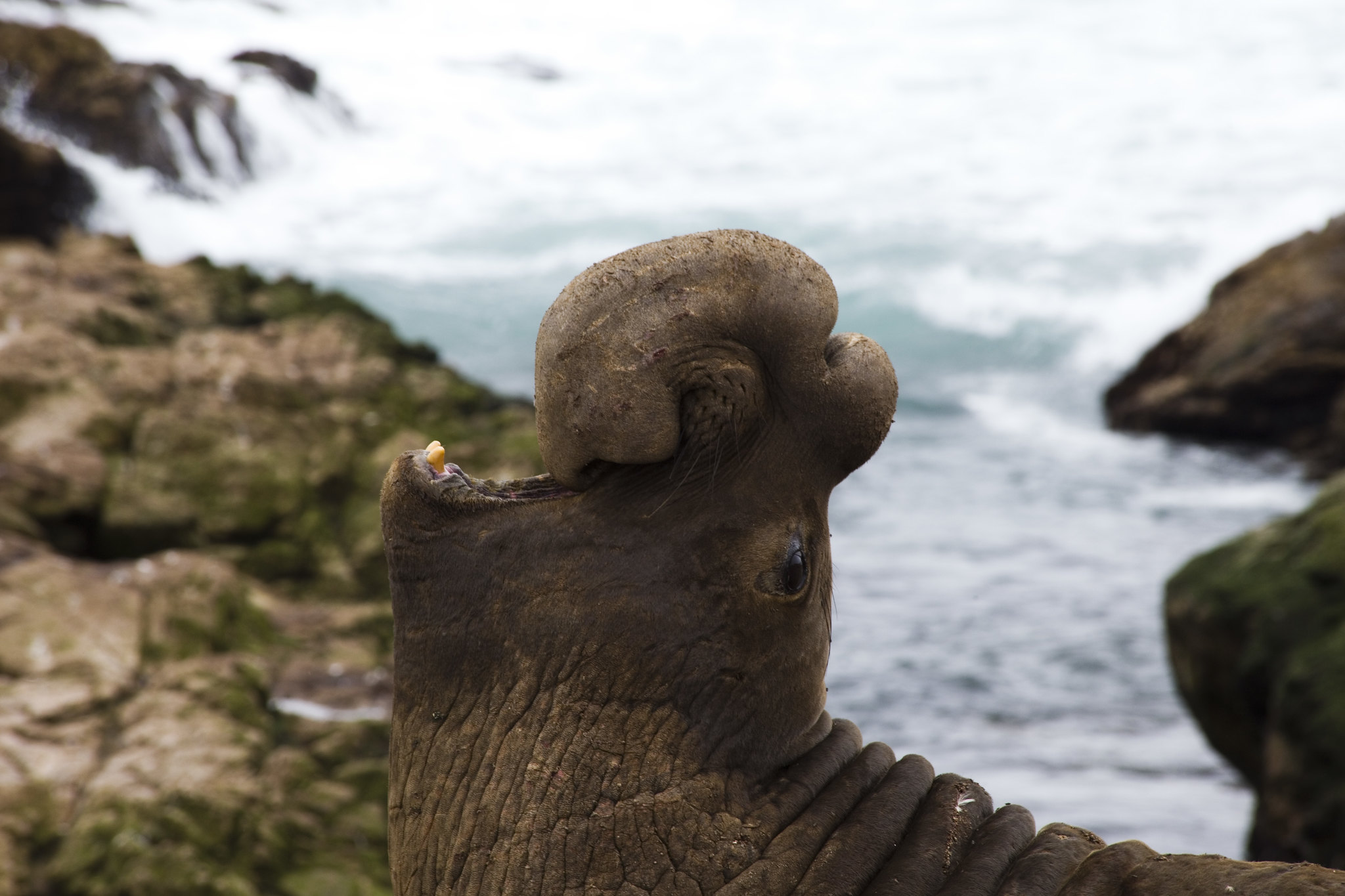
Creature Feature: Northern Elephant Seals
One of the largest and most unique species of seal in the world, this week’s creature feature is none other than the Northern Elephant Seal!
Appearance
A species of phocid (true) seal, northern elephant seals are quite unique in their appearance and behavior.
This species is not named for its size but for the distinct, elephant trunk-like snout (proboscis) adult males have. Females tend to be smaller than males, reaching around 10 feet in length and 1,500 pounds in weight on average while males can reach 13 feet long and a massive 4,500 pounds.
All northern elephant seals lack ear flaps, have a rounded face with sensory whiskers (vibrissae), and have a blended coat of silver and brown fur, which they molt annually along with the top layer of their skin (a process that can take more than a month to complete). They have large, black eyes that help in foraging behavior, and have two sets of fins that assist with movement in the water.
Northern elephant seals reach adolescence (also known as the subadult life stage) around two or three years old, during which males begin to develop their trunk-like proboscis. Adulthood occurs after three years old and reach full size and maturity after seven years of age.
Habitat & Range
Northern elephant seals call the eastern Pacific ocean home, ranging from Baja California Sur in Mexico to as far north as Alaska, though females have been recorded in Hawaiian waters at times. They spend a significant portion of the year in open Pacific waters and migrate to Californian and Mexian beaches during the winter months for breeding, raising their young, and molting. Sanctuaries in which you might find northern elephant seals on the beach are Channel Islands National Marine Sanctuary, Greater Farallones National Marine Sanctuary, and Monterey Bay National Marine Sanctuary, while they may also spend time in the waters of Cordell Bank National Marine Sanctuary and some sites near Olympic Coast National Marine Sanctuary during the spring and summer.
Diet & Life History
Female elephant seals forage in the open ocean and male elephant seals forage closer to shore along the continental shelf. Females dive deeper and can stay below the surface for longer than males due to the fact that they prey on deeper diving species. Northern elephant seals are opportunistic feeders, meaning they eat whatever is easiest to catch, and their diet usually consists of squid, small and medium sized fish, eels, crustaceans, and even small sharks and rays. Orca whales and great white sharks are northern elephant seals’ primary natural predators.
Elephant seal pups are usually born on beaches from Mexico to California during the winter and early spring months after a year of gestation. Pups stay close to their mothers and many other mother/pup pairs (formally called a rookery) for around a month where they nurse and gain nearly 10 pounds each day. Once weaned, pups will stay on shore for around two more months, venturing out into the ocean for short periods of time to learn and practice important navigation and foraging skills with adults and other juveniles. When breeding season is over, elephant seals will return to sea where they will forage until the next breeding season.
Migration routes and timing for male and female elephant seals differ greatly. Males return to shore first where they have violent and often bloody battles to establish dominance in the hierarchy and territory along the beach. These battles often feature threatening sounds produced by inflating their trunk-like snouts and violent head thrashing and biting. Days to weeks later, females return to shore where they find a harem (breeding group of one male and multiple females) to conceive or for protection while they give birth and nurse their young.
Marine Mammal Viewing in Sanctuaries
Breeding sites are generally quite full during peak season with thousands of individual elephant seals populating a single beach, making elephant seals a species commonly seen on marine mammal viewing tours. When viewing any marine animals, but especially marine mammals, remember your Ocean Etiquette! Keep a safe distance, don’t try to feed or interact with wild marine mammals (even if they look sick or in danger), and speak up if you notice other viewers or tour operators behaving in a way that disturbs the wildlife or other viewers.
Threats and Conservation
After whale populations suffered from commercial whaling in the 1800s, elephant seals were prime targets for hunting due to the dense and plentiful oil their bodies produce, an oil that was primarily used by humans for lamp oil. In fact, they were thought to be extinct in 1884 and did not start to recover until the early 1900s. Due to transitions away from oil-burning lamps and legal protections benefitting marine mammal species, such as the Endangered Species Act of 1972 and the Marine Mammal Protection Act of 1972, northern elephant seal populations have made a recovery to population levels before being overexploited.
Fishing gear entanglements, disease, environmental change, and accidental vessel strikes remain threats to the species.
